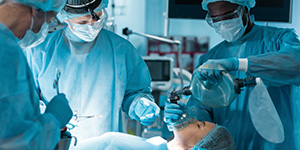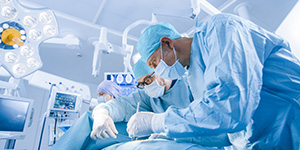Contributed article by Julie Moniz, Clinical Educator
Pneumonia is an infection in the lungs which causes localized or widespread inflammation. There are many different types of pneumonia, but the basic categories are caused by viruses, bacteria, or the accidental ingestion (aspiration) of stomach contents into the lungs. In an unfair plot twist, ventilators themselves can cause pneumonia, known as VAP (Ventilator-associated pneumonia). It’s complicated, but vents are designed to work opposite the normal physiology and function of how lungs work. Ventilators are a great rescue device and literally save lives, except for the unfortunate side effects they create.
Why do patients need to be suctioned?
Pneumonia can be isolated to one lung or invade both lungs simultaneously, also known as the dreaded double pneumonia. Patients with pneumonia are usually quite ill and can rapidly progress from respiratory insufficiency to outright respiratory failure. The lungs and heart are intertwined and closely related: problems with the lungs quickly lead to problems in the heart and vice versa, even in previously healthy people. At the point the afflicted individual can no longer breathe on their own and maintain adequate oxygenation, they are intubated and placed on the ventilator.
There really isn’t a way to discuss pneumonia without talking about (brace yourself!) the disgusting and wretched body secretions known as sputum, phlegm, mucus, pus or “loogies” which pool inside the lungs and need to be expelled frequently. The non-intubated patient simply coughs them up and spits them out on their own.
The intubated patient cannot, for a variety of reasons, and needs to be suctioned. If not, the secretions build up and block the passage of air to the smaller airways beyond it. Fun fact: mucus can accumulate inside the breathing tube to such an extreme extent it completely plugs the diameter of the tube, necessitating an emergency removal and reinsertion of a new one.
New frontiers in suctioning
The design of “in-line” or closed suctioning systems has been around for decades. Ask any ICU nurse in the early 90s about this topic and they will reference the Ballard in-line suction device, which was common in that era to suction tracheostomies. Without an in-line device, the nurse would need to don sterile gloves and a sterile suction kit which contained a long thin catheter and sterile saline to squirt down the tube.
In this outdated technique, the patient was momentarily removed from the vent altogether, suctioned, and returned to the vent. The lungs are sterile though, and this procedure was fraught with potential to allow other bacteria and viruses to be entrained down the open tube as the patient coughs violently, sucking in the room air.
The idea of suctioning is to keep the lungs as sterile and clean as possible without introducing new bacteria or viruses. It also needs to be done as quickly as possible, as the patient is not breathing oxygen during the suction procedure. The process of suctioning is very irritating, causing the patient to cough violently and their blood oxygen levels to drop like a stone.
In response to suction, the heart rhythm skips beats, while the heart rate and blood pressure shoot up dramatically. This is where the suction endotracheal tube comes in. It is essentially identical to a regular cuffed endotracheal tube, with a separate capped tube hanging off the side that can be inserted into the portion of the breathing tube below the vocal cords, then attached to suction and retracted, thereby pulling out those nasty secretions. The process of suctioning is referred to as pulmonary hygiene or pulmonary toilet. The suction ET tube makes the process smoother and faster.
Suctioning and Covid19
If you never heard of pneumonia prior to the Covid19 pandemic, it’s likely you got a crash course introduction in March 2020 along with the rest of the world. People breathe in the Covid virus, which multiplies and flourishes rapidly inside the lung’s fertile playground: viruses and bacteria love a warm, dark, wet environment. The virus swiftly overcomes the host’s ability to breathe on their own.
The Covid virus has the extra feature of producing mass quantities of sputum and mucus, which means more suctioning. Another bonus of the suction endotracheal tube is that the virus-laden mucus stays entirely inside the tube’s closed system, protecting the healthcare provider from additional exposure. Compared to conventional open suction, the patient is also protected by the suction ET tube from extra bacteria like staphylococcus introduced by the provider’s hands if sterile technique is broken.
The post-Covid landscape reinforces the need to better protect our patients from potential harm and our providers from accidental and unnecessary exposures. The suction endotracheal tube allows us to do both at once.
SourceMark offers our own line of Suction ET Tubes designed with both clinicians and their patients in mind, offering a safe, sterile way to maintain airways during routine and surgical procedures. View the product brochure to learn more about features and benefits and to get information on pricing and ordering.









